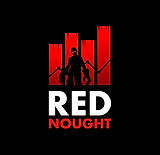How it Works

Structure
“Baldr” games are created by providing the core engine with configuration data that is updated and constructed using an editor. The engine supports multiple editors including visual editors for Mac, PC, VR, or editors for visually impaired developers such as the Hodr Engine.
Game developers can freely switch between editors as required, so may use a non-visual editor whilst travelling and a VR based editor for object positioning.

Design
“Baldr” uses a hierarchical approach to games development with the “Game” as the top level.
Each game is a series of levels, and each level comprises of a series of maps containing arenas, players, non-player characters and in-game objects for the player to interact with.
The player narrative is controlled through a series of quests that allow the player to progress through the game.
One massively important, but overlooked facility is that the engine provides automatic save / load game features so that the developer does not have to worry about that complexity.

Maps
Within the level is a series of maps. These are typically based on different scenery styles, but we support the option to mix and match as required.
Initially the developer will be manually snapping together arenas to build their maps. But we have prototype functionality being tested that utilizes procedural generation to create maps of infinite size and scale.
The engine provides automatic optimization for object budgets so the developer will not need to undertake complex occlusion optimization (i.e. the engine automatically handles turning off objects players cannot see).

Arenas
The core of a “Baldr” game is the arena. This is a specific game play area that contains a series of exits, in-game objects, NPCs and navigable areas.
Template arenas are provided from our content library, and the developer can then customize and adjust them as required.
All objects available to be used are designed as “Baldr” compatible. We provide a 100% “guaranteed to work” promise to developers to avoid the issues that often occur when using bought-in 3rd party assets.

Story
Most game engines do not consider story in the game creation process. Yet to a player, the story and its characters are the most compelling reason to play games.
“Red Nought” believes story is at the heart of the game's creation process and as such we provide a series of tools that help you design your game.
To make the games design process easier to understand we utilize the metaphor of a book with chapters and characters. We break down a complex game into a series of short sequences.

Chapter
This is an example of a simple chapter in a game. In this case the Brave Knight has entered an Arena. The narrator will provide some backstory as he steps into a Narration Point that explains that he needs to find the key to open the door that leads to the next Arena.
Once the key has been collected, the door will open, and the second narration point will be enabled to provide the next installment of the story.
Finally, when the player goes through the open door, the status of the overall game will be updated to say that this chapter has been completed.

Narration
“Narration” allows the player to be told the story as they progress through the game. Any number of processes can trigger narration to be played, but it will usually be at a point where the player has achieved a goal or walked into an area that requires them to be told about the next stage of the game.
Narration can either play once only, or every time. Narration comprises both audio as well as a transcript for audio-impaired players to make use of.

Interaction
All objects in “Red Nought” have a status. This status determines the behavior of the object and how it interacts with its surroundings. For example, a door could be “Locked”, “Unlocked” or “Open”.
All story elements are broken down into simple processes. Most object interaction is driven by “Action Points”. When a character walks into the “Action Point”, it will then change the status of itself and / or other objects in the game.
As objects change status, actions will be carried out such as a door will unlock and swing open.

Status
In this case, when the player walks into the “Key”, it will change the key’s status to “Collected”. When “Collected” the key will change the state of the door to “Unlocked”. It will then make itself invisible to show it has been “Collected”.
When the door’s status changes to “Unlocked”, it will trigger the opening animation to show the player that they can go through. It will then change its status to “Open” ready for the next stage.

Completed
The door changes its status to “Open” and enables a new “Action Point”.
When the “Player” enters this “Action Point”, it will change the status of the “Chapter” to completed. The “Action Point” will also change its status to “Completed”.
With the completion of the “Chapter”, the story has progressed, and the “Brave Knight” has played their role in the story by accomplishing their tasks.
The next “Chapter” can now be started.






